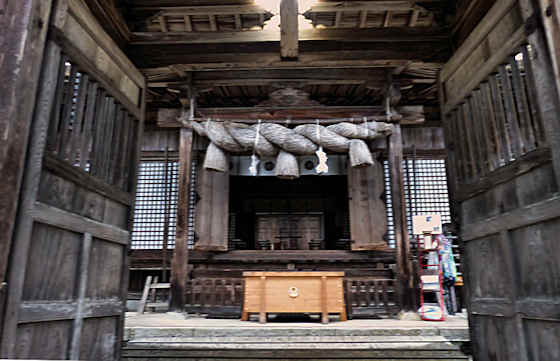Showing posts with label chugoku33. Show all posts
Showing posts with label chugoku33. Show all posts
Sunday, April 14, 2024
Sakura Shrine & Kojima Takanori
Thursday, February 15, 2024
Takano Shrine Ninomiya of Mimasaka
The shrine is the source of several nationally recognized Important Cultural properties, including a pair of small, wooden komainu dating to the early 9th century, and a pair of wooden Zuijin statues dated to 1125. These are all now in a museum and can't be seen here.
Labels:
chugoku33,
dragon,
izumo kaido,
ninomiya,
shimenawa,
Shrine,
torii,
ugayafukiaezu
Wednesday, December 27, 2023
Mimasaka Soja Shrine
Labels:
chugoku33,
komainu,
okuninushi,
Shrine,
torii
Tuesday, October 17, 2023
Nakayama Shrine
An Ox statue usually signifies Tenjin, the deified spirit of Sugawara Michizane, and he is not one of the main kami enshrined here, but there must be a secondary Tenjin shrine.
The Shinmon gate was relocated here from Tsuyama Castle when the castle was dismantled in the early Meiji Period.
The three main kami enshrined are Kagamitsukuri no kami, Ame no nukado no kami, and Ishikori-dome no mikoto, with the first and third of these being associated wit mirrors. In the meiji period the names were changed but then changed back after 1946.
Labels:
chugoku33,
ichinomiya,
komainu,
okayama,
sacred tree,
Shrine,
tenjin,
torii,
tsuyama
Sunday, August 13, 2023
Tsuyama Snapshots
The previous post was the historic Kajimura Residence I visited at the end of the previous day.
Friday, June 16, 2023
Kajimura Residence Tsuyama
The garden is also recognized nationally, and combined with the teahouse makes this traditional property well worth a visit.
Labels:
Architecture,
chugoku33,
garden,
Museum,
preservation district,
teahouse,
tsuyama
Subscribe to:
Posts (Atom)





































































